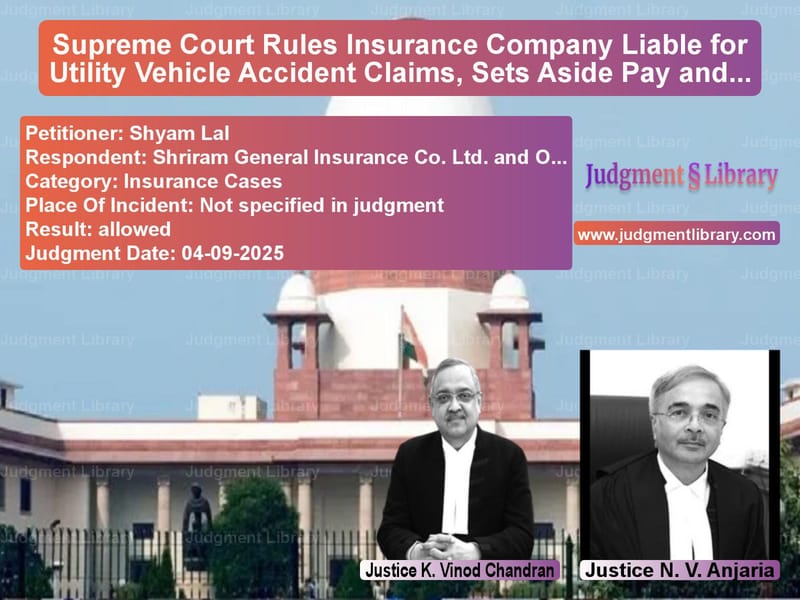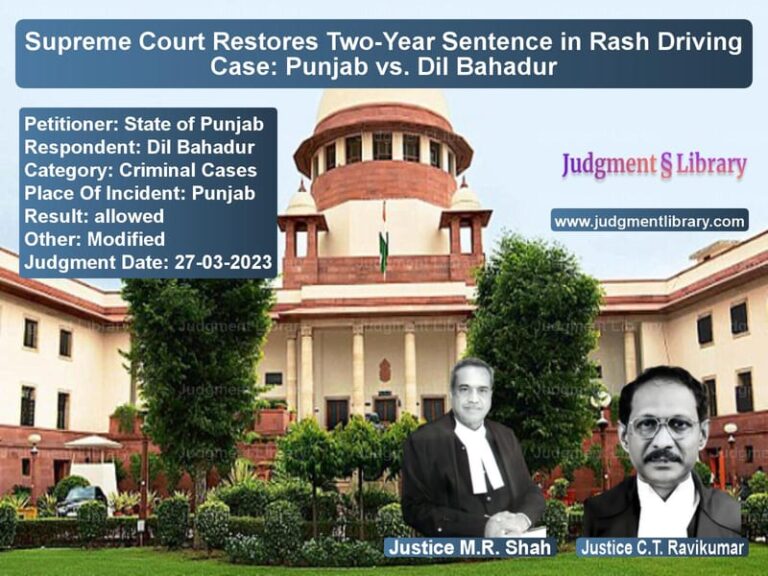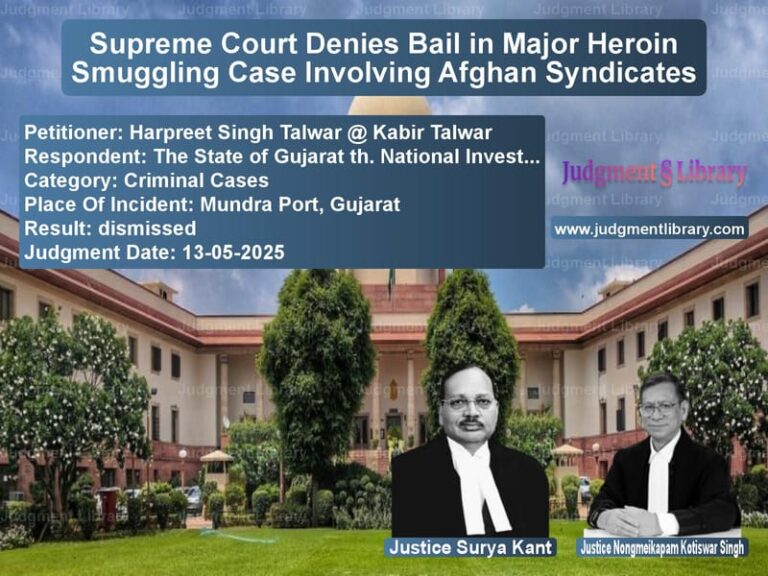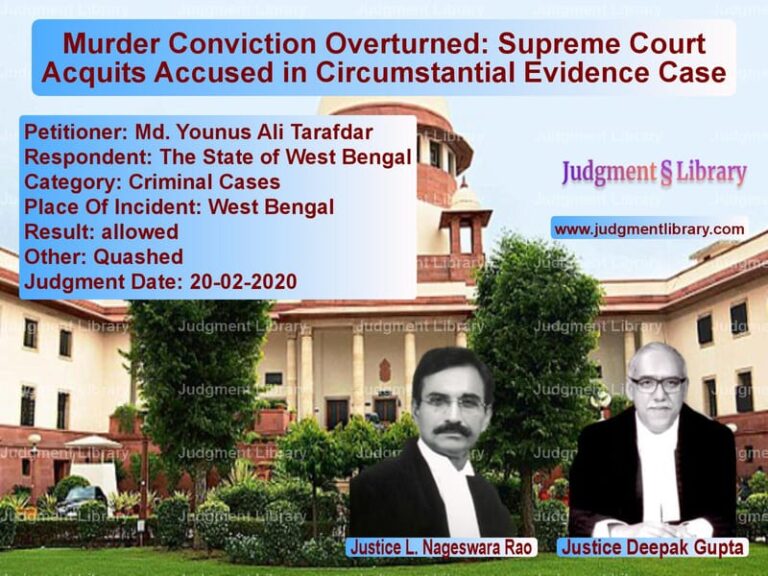Supreme Court Rules Insurance Company Liable for Utility Vehicle Accident Claims, Sets Aside Pay and Recovery Order
In a significant judgment that clarifies the insurance coverage for utility vehicles, the Supreme Court has set aside a High Court order that had directed “pay and recovery” in a motor accident claim case. The apex court ruled that the insurance company cannot escape its liability to compensate victims of an accident involving a utility vehicle that was properly registered and insured as per legal requirements.
The Tragic Accident and Legal Proceedings
The case originated from a devastating accident involving a utility vehicle that resulted in multiple fatalities and injuries. The incident gave rise to five separate claim petitions before the Motor Accident Claims Tribunal (MACT). The tribunal had found that the accident occurred due to the rash and negligent driving of the utility vehicle and that the vehicle was covered by a valid package policy issued by Shriram General Insurance Company. However, the insurance company challenged the tribunal’s order before the High Court, which directed a “pay and recovery” arrangement, meaning the insurance company would pay the compensation but could later recover it from the vehicle owner.
The Vehicle Owner’s Arguments
The appellant-owner, Shyam Lal, challenged the High Court’s order through his counsel, who presented crucial documents including the Certificate of Registration, contract carriage permit, and package policy. The counsel argued that “the limitation as to use insofar as carriage of goods applies only to a goods vehicle and not an utility vehicle which can carry both passengers and goods.” He emphasized that “there is no ground for ordering ‘pay and recovery’ in the facts and circumstances of the case, especially when the Insurance Company had not taken a defence that the vehicle was insured as a goods vehicle.”
The owner’s position was supported by documentary evidence showing the vehicle’s seating capacity as 4+1 (including driver) and its registration as a utility van with a contract carriage permit specifically allowing carriage of passengers.
The Insurance Company’s Contentions
The insurance company’s counsel, however, contended that the policy restrictions applied to the case. He argued that “there could be no plea of goods being carried in the vehicle because one of the deceased was a student and the others; a catering employee, a painter, an employee in the postal department and an unemployed man. The restriction squarely applies, and the passengers cannot be said to be validly covered under the policy.”
The insurance company further claimed that “even if the passengers are said to be owners of goods or his representative, there could not have been more than four passengers in the vehicle, when the claim petitions were numbering five.” They also alleged that “there was also an allegation of nine deaths having occurred in the accident, which clearly indicates overloading.”
The Supreme Court’s Analysis
The Supreme Court conducted a thorough examination of the documentary evidence and legal provisions. The court noted that “the certificate of registration indicates the class of the offending vehicle to be an Utility Van which has a seating capacity of 5, including the driver. The permit issued as a contract carriage, also allows 5 passengers to be carried in the vehicle.”
The court provided a crucial legal distinction by explaining that “a ‘contract carriage’ as defined under Section 2(7) of the Motor Vehicles Act, 1988 means a motor vehicle which carries a passenger or passengers for hire or reward and is engaged under an express or implied contract and includes a motor cab notwithstanding that separate fares are charged for its passengers. This is in clear distinction with a ‘goods carriage’ defined under Section 2(14) of the Act which is a vehicle constructed or adapted or used solely for the carriage of goods.”
Examination of Insurance Policy and Evidence
The court carefully examined the package policy, noting that it described the vehicle as a “Mahindra Bolero Camper Utility DC, 2WD, BS2” with seating capacity of 4+1 including the driver. The judgment observed that “the utility vehicle obviously is for carriage of passengers and goods; the passengers not being necessarily the owners of the goods as seen from the seating capacity of 4+1 including the driver specified also in the insurance policy.”
The court found particularly significant the evidence of the insurance company’s Branch Manager, who admitted in cross-examination that “the insurance of any vehicle is issued after perusing the records of the vehicle like, registration certificate, fitness and permit validity. It was admitted that the insurance policy was issued to the owner, in accordance with the rules and looking at the registration certificate, wherein the category of the vehicle is registered as ‘Utility Van’.”
The witness further admitted that “the utility van is a vehicle in which half portion is used for carrying of goods and half portion in front is used for carrying passengers.” Based on these admissions, the court concluded that “there can be no restriction insofar as the ‘limitation as to use’ as found in the policy which applies only to goods vehicles while the present vehicle as per the certificate of registration is a utility vehicle and the permit issued is of a contract carriage.”
Addressing the Overloading Allegation
The Supreme Court also addressed the insurance company’s contention about multiple claim petitions indicating overloading. The court found that “the contention regarding 5 persons having filed claim petitions, indicating more than 4 persons having been carried in the vehicle, though is attractive has no significance on the facts as revealed from the order of the Tribunal.”
The court noted that the Tribunal, based on evidence, had “clearly found that in addition to the passengers carried in the vehicle, some pedestrians were also dragged down by the vehicle when the accident occurred.” An eyewitness had testified that “just prior to the accident, he saw the vehicle coming with 4 passengers in it,” and this evidence remained unchallenged during cross-examination by the insurance company.
The court explained the circumstances: “The vehicle having fallen down the gorge, with the passengers as also the pedestrians, one of the claim petitions is of a pedestrian, which is not clearly demarcated for reason of the 5 persons having been extricated at the accident site from and around the vehicle.”
The Court’s Final Ruling
After comprehensive analysis, the Supreme Court declared: “We find absolutely no reason to sustain the order of the High Court directing pay and recovery. The liability is on the Insurance Company and that has to be satisfied fully by the Insurance Company.”
The court emphasized that “the package policy was issued by the Insurance Company after looking at the certificate of registration and the permit issued and it has been clearly specified that the vehicle is entitled to carry 4+1 passengers in addition to the goods. The Insurance Company in the above circumstance, cannot wriggle out of its liability to indemnify the owner.”
Compensation Modification
While allowing the appeals, the court made one modification regarding compensation calculation in one specific case (MACT Case No. 134 of 2014). The court noted that “in computing the income at the time of disbursing the amount, the Tribunal shall ensure that 1/3rd deduction is made from the total loss of income computed before disbursing the amounts.” This adjustment was made to ensure that just compensation is awarded in accordance with established principles of compensation calculation.
Legal Implications and Significance
This judgment has significant implications for insurance claims involving utility vehicles. It clarifies that insurance companies cannot apply restrictions meant for goods vehicles to utility vehicles that are properly registered and permitted to carry passengers. The ruling emphasizes that insurance policies must be interpreted in light of the vehicle’s registration certificate and permit conditions.
The judgment also reinforces the principle that insurance companies, having issued policies after examining all relevant documents, cannot later deny liability based on technical interpretations of policy clauses that contradict the documented nature and permitted use of the vehicle.
For vehicle owners and accident victims, this judgment provides important protection against insurance companies attempting to avoid liability through technical defenses. It ensures that victims of road accidents receive timely compensation without being caught in legal battles between insurance companies and vehicle owners.
The Supreme Court’s decision to set aside the “pay and recovery” order and hold the insurance company directly liable underscores the social welfare objective of motor accident compensation laws and the responsibility of insurance companies to honor their contractual obligations when vehicles are used as per their registered and permitted purposes.
Petitioner Name: Shyam Lal.Respondent Name: Shriram General Insurance Co. Ltd. and Others.Judgment By: Justice K. Vinod Chandran, Justice N. V. Anjaria.Place Of Incident: Not specified in judgment.Judgment Date: 04-09-2025.Result: allowed.
Don’t miss out on the full details! Download the complete judgment in PDF format below and gain valuable insights instantly!
Download Judgment: shyam-lal-vs-shriram-general-insu-supreme-court-of-india-judgment-dated-04-09-2025.pdf
Directly Download Judgment: Directly download this Judgment
See all petitions in Motor Insurance Settlements
See all petitions in Third-Party Insurance
See all petitions in Insurance Settlements
See all petitions in Other Insurance Cases
See all petitions in Compensation Disputes
See all petitions in Judgment by K. Vinod Chandran
See all petitions in Judgment by N.V. Anjaria
See all petitions in allowed
See all petitions in supreme court of India judgments September 2025
See all petitions in 2025 judgments
See all posts in Insurance Cases Category
See all allowed petitions in Insurance Cases Category
See all Dismissed petitions in Insurance Cases Category
See all partially allowed petitions in Insurance Cases Category







